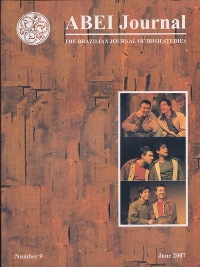Thomas Kilroy’s The Shape of Metal: “Metal … Transformed into Grace” – Grace into Metal
DOI:
https://doi.org/10.37389/abei.v9i0.3694Keywords:
Thomas Kilroy, The Shape of Metal, FailureAbstract
Thomas Kilroy in The Shape of Metal, probes into the age-old problems
of the relationship between art and life, artist and human being, physical reality and its transcendence, throwing new light on the many ambiguities involved. The essay examines some of the ways Kilroy dramatizes the experience of human and artistic failure through the protagonist, an old female sculptor, and the evocation of giant artists, from Michelangelo through Giacometti to Beckett and argues that the achievements and artistic principles of these artists highlight some of Kilroy’s own drama-forming principles as well as aspects of his theatricality.
Downloads
Published
17-06-2007
Issue
Section
Drama
How to Cite
Bertha, C. (2007). Thomas Kilroy’s The Shape of Metal: “Metal … Transformed into Grace” – Grace into Metal. ABEI Journal, 9, 85-97. https://doi.org/10.37389/abei.v9i0.3694


